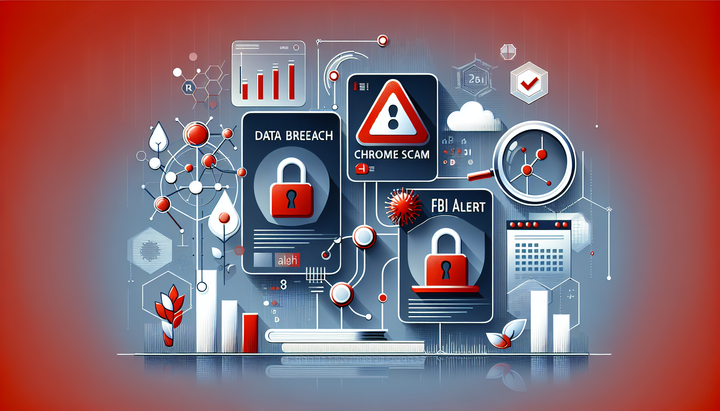FBI Warns iPhone Users: Toll Scam Cybersecurity Alert

Introduction: Rising Threats in Cybersecurity
The digital world is evolving at an unprecedented pace, bringing about innovations and opportunities but also a host of new security threats. Recently, the FBI issued a stark warning to iPhone users regarding a smishing scam that pretends to be an urgent toll fee demand. This scam is deceptively crafted to lure consumers into believing they have outstanding payments for road tolls, threatening them with hefty fines if they fail to act immediately.
Such scams not only target vulnerable users but also highlight the critical importance of cybersecurity in our everyday lives. In an era when mobile communication has become mainstream, cybercriminals are continuously developing sophisticated methods to breach personal security. The smishing scheme, a portmanteau of SMS and phishing, represents one of the newest challenges in digital security, exploiting trust and urgency to deceive its victims.
Understanding Smishing: A Modern Cyber Threat
Smishing is a type of cyberattack that uses text messages as a medium to deliver fraudulent offers or impersonated warnings. Unlike traditional phishing, which typically uses email, smishing messages come directly to your mobile phone, making them seem more personal and believable. Attackers often design these messages to mimic official communications from trusted organizations.
For example, recent messages purportedly from a local toll service have been circulating nationwide, falsely informing recipients of unpaid toll charges. The messages include a link that is meant to redirect users to a bogus webpage, where unsuspecting individuals are prompted to enter personal information or financial details. Understanding the mechanisms behind such scams is the first step toward protecting oneself from becoming a victim.
Details of the FBI Warning and Scam Mechanism
The FBI’s warning comes amid an increasing number of complaints about smishing scams. The Federal Bureau of Investigation, together with the Internet Crime Complaint Center (IC3), has confirmed receiving over 2,000 reports about this type of fraud. The scam typically exploits the following methods:
- Impersonation: The scam texts are designed to mimic reputable toll services, complete with official logos and professional language.
- Urgency and Fear Tactics: Messages often include threats of impending fines and legal action if the alleged debt is not settled immediately.
- Phishing Links: Recipients are directed to counterfeit websites that appear legitimate, where they might be tricked into sharing sensitive information.
- Malware Risks: In some cases, clicking on the provided link might inadvertently download malware onto the device, further compromising user data.
These techniques are intended to create a sense of urgency, prompting many users to react impulsively without cross-checking the facts. The FBI and other cyber safety organizations have stressed the importance of scrutinizing suspicious messages and verifying their authenticity through official channels.
How the Scam Operates: A Step-by-Step Look
To better understand the scam, it is helpful to break down its typical operation:
- Initial Contact: The victim receives a text message claiming they owe unpaid toll fees. The text may mention specific states or toll agencies to add credibility.
- Call to Action: The message includes a directive—usually a clickable link—to promptly settle the alleged debt online.
- Phony Website: Clicking the link takes the recipient to a fraudulent webpage that resembles a genuine toll service site. Here, users are asked to provide personal details, such as bank or credit card numbers.
- Data Harvesting: Once the information is submitted, cybercriminals can use it for unauthorized transactions, identity theft, or installing malware.
- Escalation: Victims who comply may experience recurring demands for more information or even additional fraudulent charges.
This clear-cut sequence shows how swiftly a smishing scam can compromise personal data, making it imperative for users to remain vigilant.
Protecting Yourself Against Cyber Threats
With growing sophistication in cyberattacks, here are crucial steps and tips to help protect against smishing scams:
- Verify the Source: Do not rely solely on the text message. Contact the actual tolling agency using verified contact details from their official website.
- Avoid Clicking Links: If you are suspicious of any text, avoid clicking any embedded links. Instead, type the official website address directly into your browser.
- Enable Two-Factor Authentication (2FA): Add an extra layer of security to your digital accounts by enabling 2FA, requiring a secondary verification step beyond just a password.
- Regular Software Updates: Keep your smartphone’s operating system and banking apps updated to protect against known vulnerabilities.
- Educate Yourself: Stay informed about current scam trends by following official updates from trusted sources like the FBI and FTC.
Additionally, if you ever find yourself doubting a text message, consider the following checklist:
- Does the message contain urgent or threatening language?
- Is the message sent from an unfamiliar number or account?
- Are there any grammatical errors or odd punctuation, such as the use of multiple emojis?
- Have you received similar messages in the past?
- Is there an official website or customer service contact provided to verify the claim?
Referring to these steps can help you assess and mitigate potential risks before falling prey to malicious schemes.
Expert Opinions and the Future of Digital Security
Digital security experts emphasize that cybersecurity is not a one-time fix but an ongoing process. The recent FBI warning is a testament to the evolving nature of cyber threats, especially in the realm of smishing scams. Experts from institutions such as the Department of Homeland Security and leading cybersecurity firms have weighed in on the importance of multi-layered security approaches.
According to cybersecurity analyst Dr. Helena Morris, “The sophistication of smishing scams demonstrates how cybercriminals adapt their strategies to exploit everyday technology. It is essential for individuals and organizations to remain educated, use advanced security measures, and report suspicious activities to the appropriate authorities.”
Moreover, the integration of artificial intelligence and machine learning in cybersecurity is becoming increasingly critical. These technologies can help detect unusual patterns in communication and intercept potential scams before they inflict harm. In the near future, we may see enhanced mobile security apps that are capable of analyzing text messages for fraudulent content in real time.
The collaboration between federal agencies, tech companies, and cybersecurity experts is vital. Initiatives such as increased public awareness campaigns and improved digital forensics have already resulted in the identification and shutdown of several scam networks. However, as technology evolves, so too will the tactics employed by cybercriminals. Continuous investment in cybersecurity research and infrastructure is imperative to stay ahead of these threats.
Conclusion: Staying Safe in an Increasingly Digital World
The recent FBI alert regarding a smishing scam targeting iPhone users is a sobering reminder of the vulnerabilities that exist in our connected world. As cyber threats continue to evolve, the onus falls on both individuals and organizations to prioritize digital security. By understanding the mechanics of these scams and taking proactive measures, consumers can safeguard their personal information and prevent unauthorized access to their financial resources.
To summarize the key takeaways:
- Always verify the legitimacy of any unsolicited communication, especially those that demand immediate action.
- Avoid clicking on unknown links, and be wary of messages that create a sense of urgency.
- Keep your devices and software updated to benefit from the latest security protections.
- Utilize multi-factor authentication to add an extra layer of security to your accounts.
- Report suspicious activity to authorities such as the FBI or FTC to help combat cybercrime.
As our world becomes more digitally intertwined, continuous vigilance and informed caution are the best shields against cyber threats. The FBI’s recent warning serves not only as a cautionary tale but also an opportunity to reassess and bolster our personal cybersecurity practices. Stay alert, stay informed, and above all, protect your digital life against the ever-looming threat of fraud.



Comments ()